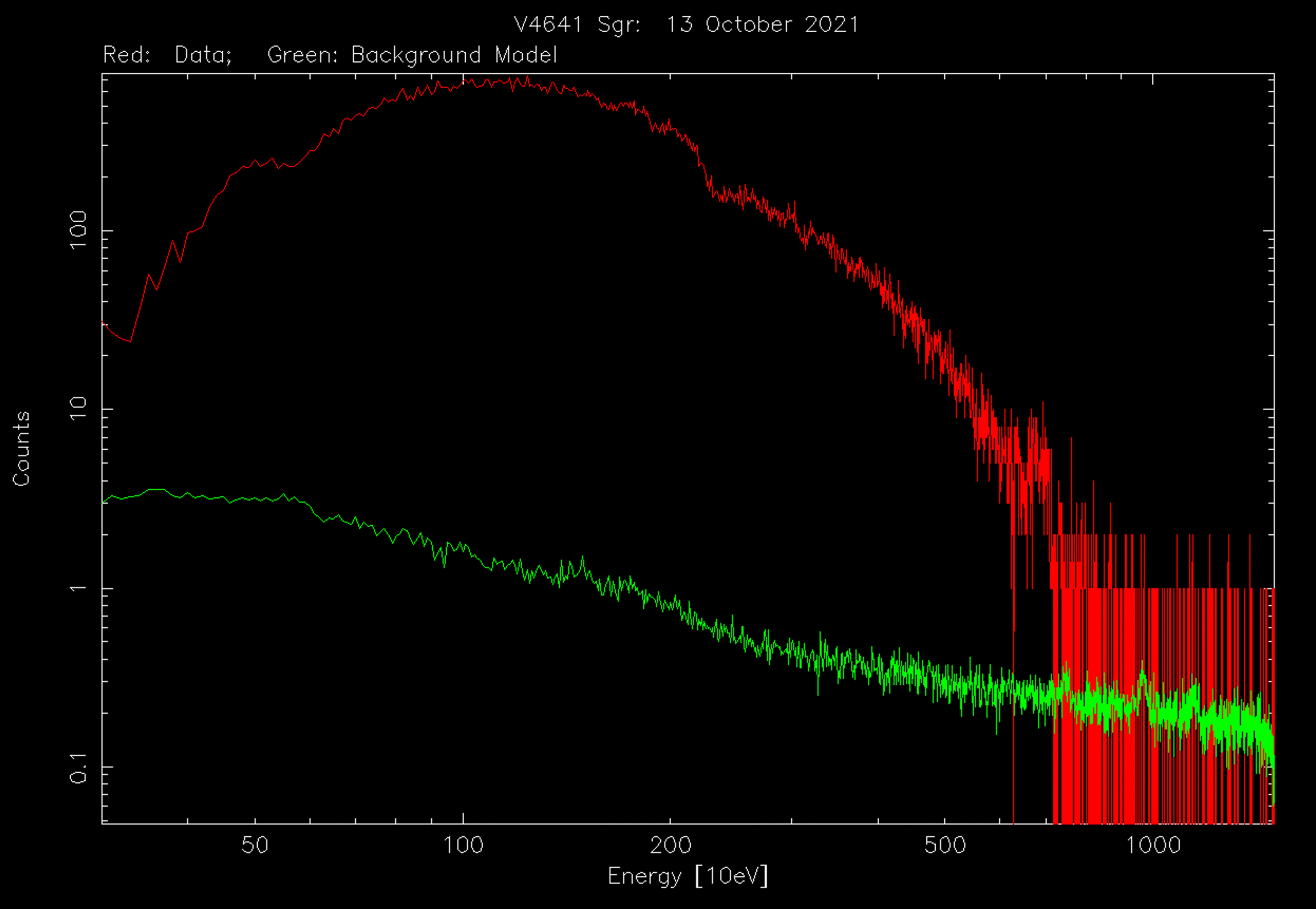NICER / ISS Science Nugget
for October 14, 2021
NICER evidence of a black-hole disk wind
On October 13, JAXA's MAXI payload detected possible brightening in X-rays of the black-hole binary V4641 Sgr. This system is relatively nearby, at a distance of 6.6 kpc (21,500 light-years), and is also unusual in that the masses of both the black hole and its companion star have been reliably measured. Discovered in 1999, V4641 Sgr exhibits mild outbursts every few years; NICER observations of the last one, in Dec 2019-Feb 2020, were hampered by the target's close proximity, on the sky, to the Sun (as reported here Feb 6, 2020).
NICER followed up MAXI's most recent alert within a few hours, and confirmed the new outburst of V4641 Sgr. The X-ray spectrum accumulated with just over 500 seconds of exposure (see figure) is consistent with an absorbed power-law model, but also reveals a blue-shifted emission line from fluorescing iron atoms, indicating a fast outflow or wind likely from a newly formed disk of gas from the companion star being accreted by the black hole.
ESA's INTEGRAL and NASA's Swift observatories later also detected the system. These results have been published in Astronomer's Telegram #14971 by Motta et al.

Figure: X-ray photon count spectrum from an initial NICER snapshot observation of V4641 Sgr. The enhancement between channels 650 and 700 (photon energies 6.5-7 keV) likely represents 6.4 keV line emission from highly ionized iron atoms, Doppler shifted to higher energies in an outflow that is moving partially toward us.
<< Previous
Main Index
Next >>